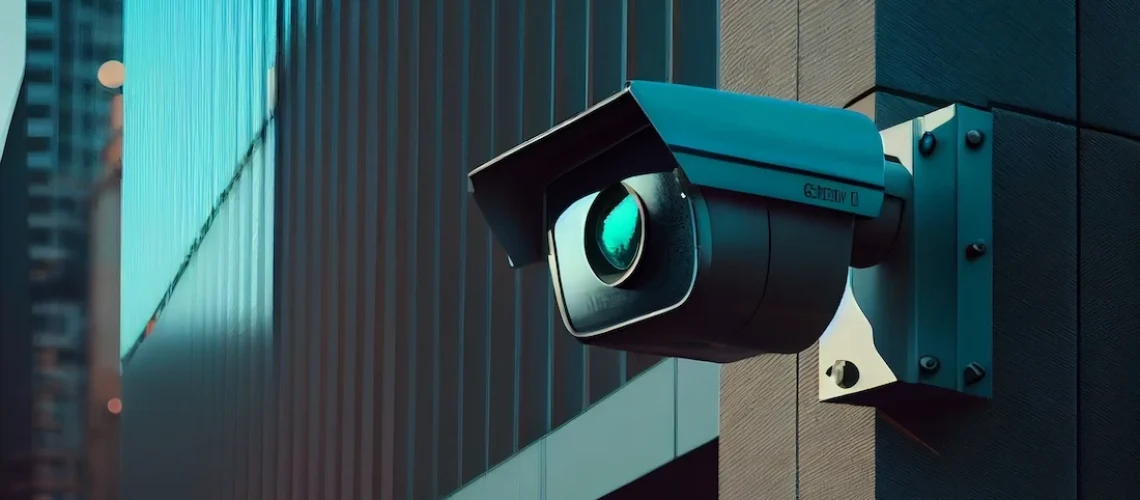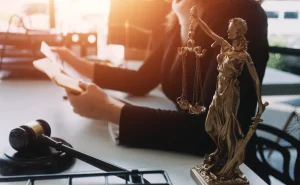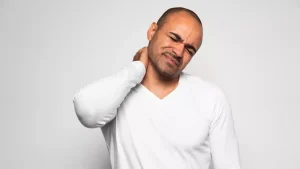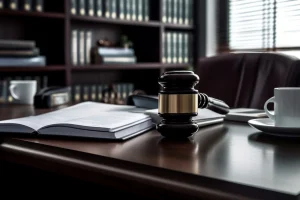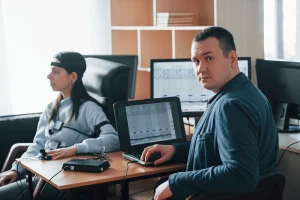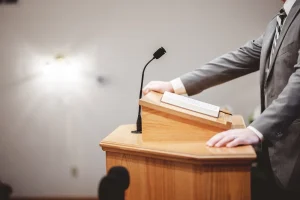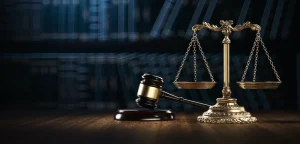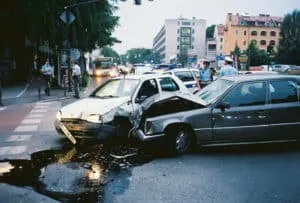Surveillance Evidence: How It Affects Your Personal Injury Claim
Imagine you’ve been injured, and the key to your claim lies hidden within hours of silent footage. Surveillance evidence, once a secondary player in legal narratives, has now taken center stage in personal injury cases. It can tip the scales of justice with silent testimony, immortalizing moments that words often fail to capture. This article delves into the invisible witness that is surveillance evidence, exploring its roles and ramifications in the legal arena of personal injury claims.
From the all-seeing eyes of traffic cameras to the quiet observer in a corner store, surveillance devices are omnipresent, capturing snippets of our lives without prejudice or bias. Each form of surveillance—be it video footage, electronic or medical records—can unravel a different thread in the complex tapestry of evidence needed to prove fault, liability, and the extent of injuries sustained. We journey through the various types of surveillance evidence and discover how they can either fortify or fracture a personal injury claim.
Yet, the path to presenting surveillance evidence in court is fraught with hurdles, from establishing its admissibility and relevance to navigating privacy laws and obtaining the necessary permissions. As we embark on this exploration, we’ll provide insights into how such evidence is gathered, presented, and contested—illuminating the strategic importance of surveillance in shaping the outcomes of personal injury legal battles.
What Is Surveillance Evidence?
Surveillance evidence is a form of evidence that comprises video recordings, photographs, electronic monitoring, and observations that depict a person’s activities and condition. In the realm of California personal injury law, such evidence can be categorically crucial for both plaintiffs and defendants. It serves a dual purpose, acting as substantive evidence to demonstrate the actual physical abilities of an injured plaintiff, or as impeachment evidence designed to contest and possibly weaken their credibility.
With the sophistication of digital technology, surveillance evidence has expanded beyond mere videotapes or photos. It encompasses data from various sources including traffic camera footage, GPS tracking from smartphones or wearable tech, and even social media activity. This form of evidence can be especially persuasive at trial, providing concrete visual proof of the plaintiff’s physical condition which might support or dispute their legal claim.
However, in compliance with California Law, any intended surveillance evidence must be disclosed to the other party at least 90 days before the trial, unless permission is granted by the Court for a different timeline. It’s not just video evidence that plays a role; information gleaned from interviews with acquaintances of the plaintiff can also be part of the surveillance arsenal, giving insight into the daily life and capacities of the person claiming injury.
Types of Surveillance Evidence
In personal injury cases, the array of surveillance evidence used is as diverse as the incidents in question. Types of such evidence include videos and surveillance footage, social media posts, emails, photographs, and GPS data. Each element works to construct a vivid picture of events and behaviors that are crucial to the case at hand.
Videos and surveillance footage, in particular, serve as dynamic records of incidents, capturing events in real-time, which can be pivotal during proceedings. The advent of social media has opened up a new domain of evidence, where posts and interactions may reveal an individual’s actions and state of mind. Email communications can offer insights into conversations and intentions around the time of the incident. Similarly, photographs can visually confirm the location, participants, and conditions related to an incident. Lastly, GPS data, taken from various devices, can pinpoint movements and locations that may be critical to a case.
Each type of surveillance evidence plays a unique role, affording attorneys the opportunity to probe deeper into the intricate aspects of a case and altering the trajectory of a legal claim.
Video Evidence and Surveillance Footage
The significance of video evidence cannot be overstated in California personal injury cases. Surveillance footage, from both public and private cameras, can be instrumental in clarifying the sequence of events. It paints a comprehensive picture encompassing vehicle positions, potential road hazards, speed, and even behaviors of the parties involved pre- and post-collision. Such footage is not without contention, as defense counsel may argue against its pretrial disclosure, aiming to maintain an element of surprise for cross-examination. However, plaintiffs’ attorneys typically advocate for early access, emphasizing the importance of verifying the tape’s integrity and allowing for a full examination of the evidence prior to trial.
Traffic Camera Footage
Traffic camera footage stands out as a reliable narrative of road incidents. These recordings capture the vehicles’ movements moments before impact, offering an objective viewpoint that can corroborate or challenge eyewitness accounts and parties’ statements. Analyzing such footage can be invaluable, shedding light on variables such as speed, traffic signals, and the actions of drivers immediately preceding a collision. The objective testimony of a traffic camera can sway the outcome of a California Superior Court case by providing irrefutable evidence of the circumstances leading to an injury.
Electronic Records and Medical Records
In today’s digital era, electronic records such as social media exchanges, text messages, emails, and other electronic forms of communication can significantly influence a personal injury case. This digital evidence may inadvertently reveal information about an individual’s activities and emotional state following an accident, offering a window into their recovery and contradicting or affirming their reported limitations due to injuries.
Medical records, meanwhile, are a cornerstone of evidence, detailing the injuries meticulously and the treatments needed. These records are irrefutable proof of the physical damages incurred, imperative in substantiating a claim for compensation.
Overall, all forms of evidence—whether captured passively by cameras on the roads or actively generated by the individuals involved—steer the course of legal discourse in personal injury cases. Hence, it is incumbent upon both plaintiffs and defendants to accurately collect and present such evidence to support their respective stands in a court of law.
Importance of Surveillance Evidence in Personal Injury Claims
Surveillance evidence in personal injury claims has emerged as a pivotal factor in the judicial discourse across California courts. The integration of videos including surveillance footage, not only crystallizes the events in question but provides unbiased, visual clarity on incidents such as vehicular accidents. With social media’s prevalence, posts and interactions are now ripe for examination, offering a reflection of an individual’s actions, mindset, and the veracity of their personal injury claims. Surveillance footage, sourced from infrastructures like traffic and security cameras, has the power to unveil nuances of an incident, spotlighting aspects such as vehicle positioning, speeds at impact, and the immediate behavior of parties involved.
Furthermore, with the rise of sophisticated technology, location data extracted from smartphones and wearable devices has become a veritable resource, debunking or substantiating an alleged victim’s movements and claims of incapacity. Ultimately, the objective of leveraging surveillance in these cases is to elucidate the real impact of the injury on the victim’s life, influencing the potential compensation through supporting detailed narrations or countering overestimated claims based on tangible evidence gathered.
Establishing Fault and Liability
The role of surveillance evidence in determining fault and liability in personal injury cases is critical. For instance, traffic camera footage or social media records can substantiate or contradict accounts of the incident, therefore helping to establish who is at fault. GPS data can reveal a person’s location and movements with precision, ultimately affecting conclusions drawn about their role in an incident. Sub rosa surveillance, frequently used to validate recovery periods or scrutinize online activities, shines a light on the legitimacy of personal injury claims.
The implications of email exchanges or captured footage can tip the scales in the assessment of fault and liability, potentially altering the course of a legal proceeding. In essence, whenever social media becomes a vault of evidence, with photos and comments that can either uphold or challenge injury claims, it becomes instrumental in establishing or disputing fault within the context of a personal injury case.
Proving the Extent of Injuries
In proving the extent of injuries in personal injury cases, demonstrable evidence such as medical records and digital captures provide an undeniable portrayal of a defendant’s liability for a plaintiff’s suffering. The interpretation of digital evidence may entail the expertise of data retrieval specialists and cyber forensic analysts, ensuring the authentication and accurate understanding of the data presented.
Crucially, surveillance can be deployed to challenge a plaintiff’s claims, contrasting alleged injury severity with documented day-to-day activities and capabilities. The objective is to present the true scope of injury inflicted, often leading to a substantial impact on the compensation due. By substantiating or countering the extent of injuries with surveillance evidence, the facts laid bare can decisively modulate the amount of damages awarded, tethered tightly to the injury’s actual impact on the plaintiff’s life.
Impeaching the Credibility of Witnesses
The credibility of witnesses in a personal injury trial can drastically sway its outcome. Surveillance evidence can thus be a linchpin, employed to question the accuracy of a plaintiff’s claims. The functional abilities of a plaintiff, as depicted by surveillance footage, can potently call into question the extent of injuries reported, potentially discrediting their position.
The timely revelation of such surveillance evidence before trial is tactically significant, as withholding it may lead to claims of prejudice and contested fairness, hampering the plaintiff’s opportunity for comprehensive cross-examination and synthesis of rebuttal testimony. The strategic use of surveillance as impeachment evidence requires procedural prudence; while instant disclosure may not be obligatory, its existence must be declared within the party’s affidavit of documents to ensure judicial integrity and a level playing field.
Admissibility of Surveillance Evidence
In California personal injury cases, the pivotal role of surveillance evidence is undeniable. However, its admission to court proceedings is subject to a rigorous set of legal criteria. Impeachment evidence, such as surveillance footage, must establish relevance and must not be excessively prejudicial to be deemed admissible at trial. The court typically employs a relevance standard when evaluating surveillance evidence for impeachment purposes, which is less stringent than the criteria for substantive evidence.
The relevance of this type of evidence is particularly critical when it relates to impeaching a plaintiff’s oral testimony. Surveillance videos can play a significant role in assessing the credibility of the plaintiff’s statements, and their admissibility heavily depends on this capacity to contradict the claims made. Nonetheless, a court may decide to exclude surveillance evidence if it fails to effectively counter the plaintiff’s testimony or if its introduction is more likely to unfairly prejudice the jury than provide clarity on the issues at hand.
Considering these fine balances, defense attorneys must wield surveillance footage with tactical acumen. They must also ensure compliance with discovery requests, timely disclosure, and adherence to California Law to uphold the integrity of the proceedings and avoid potential claims of trial prejudice against the claimant.
The Relevance and Reliability of the Evidence
Surveillance evidence, sourced from video footage and social media interactions, offers a dynamic window into the events leading up to and following an incident. This form of evidence is intrinsic to legal disputes as it provides objective insights that help unveil critical details which may not be captured through other means. For instance, in vehicle accidents, traffic or security camera footage is instrumental in reconstructing the event, providing tangible details on the positioning and speed of the vehicles involved.
In the realm of personal injury cases, surveillance films are leveraged to contest the severity of claimed injuries, as well as the impact of these injuries on the plaintiff’s daily activities. Disagreements may emerge between defense and plaintiff’s counsel over the pretrial disclosure of video surveillance, as it can significantly influence the jury’s perception of credibility and fairness. To foster a just trial, California courts mandate the recognition of this surveillance evidence, ensuring its disclosure and review prior to the trial, which aids in precise cross-examination and the formulation of rebuttal testimonies.
Privacy Considerations and Confidential Communications
While surveillance evidence is a powerful asset in court, it does intersect with privacy concerns, notably when it involves subpoenaing digital data. California’s Electronic Communications Privacy Act (CalECPA) serves as a defensive bulwark against unauthorized access to electronic data, underscoring the need for a judicial warrant or subpoena to scrutinize private electronic communications.
For evidence to be legitimate, plaintiffs must authenticate digital data by proving it is original and unaltered. The right to privacy extends to defendants as well; obtaining a defendant’s private messages must be meticulously handled to avoid infringing on their privacy rights. Given these considerations, legal teams must navigate the careful path of acquiring evidence without infringing on the nuanced rights guaranteed under California law.
Obtaining Reprint Permission for Surveillance Footage
Securing surveillance footage is an often overlooked but crucial step in substantiating a legal claim. Certain companies may necessitate a subpoena to release copies of surveillance videos, particularly in cases with high stakes like hit-and-run claims. A formal process, involving a specific form, may be required, emphasizing the importance of understanding and complying with these procedural demands.
The duration of video surveillance preservation can vary, making the swift dispatch of a preservation-of-evidence letter essential to safeguarding potential evidence. For defense teams, protocol dictates that they disclose the existence of surveillance footage ahead of a trial, offering plaintiffs fair chance to examine the footage that may be used against them in court. This practice not only aligns with the principle of fair disclosure but also serves to ensure that all evidence presented is subject to scrutiny by both parties involved.
Gathering Surveillance Evidence for Your Claim
Gathering surveillance evidence can make a significant difference in the outcome of a personal injury claim in California. This evidence may reveal the extent of a plaintiff’s functional abilities or be used to challenge their credibility. There are critical rules regarding the timing of disclosing surveillance evidence. If the surveillance is intended as substantive evidence, it must be shared with the defense at least 90 days before trial. However, evidence aimed at impeachment doesn’t require advance sharing. Defense counsel may argue against pretrial discovery of surveillance to protect the integrity of cross-examination. On the other hand, plaintiff’s counsel wants access to the footage before trial to ensure the images’ accuracy and accordingly tailor the testimony.
Insurance companies sometimes dispatch investigators to acquire surveillance that might conflict with a plaintiff’s reported injuries, directly influencing potential compensation awards. Consequently, understanding the strategic use and disclosure of surveillance footage is crucial for both plaintiffs and defendants in personal injury cases in California.
Immediate Steps to Take After an Incident
In the aftermath of an incident that could lead to a personal injury case, prompt action is essential. Attorneys or involved parties should swiftly visit the scene to begin evidence collection. Major retailers and chain stores generally require an incident report to initiate video evidence preservation. Failing to file such a report necessitates sending out a preservation letter, which assists in preventing potential video evidence from being erased or destroyed.
Especially in significant injury cases with emergency services involvement, video surveillance is usually preserved. That said, legal duty for video evidence preservation can differ based on jurisdiction and specific events. Premises owners are often encouraged to safeguard footage when litigation is anticipated, and the footage pertains to the incident.
Requesting Surveillance Footage from Relevant Parties
Obtaining video evidence can be challenging, as private entities are not obliged to volunteer their surveillance footage since it is their property—even if it captures public areas. A court order is sometimes necessary to access such footage, which is a legally intricate and potentially lengthy process.
For this reason, it is crucial to move quickly, as many organizations regularly overwrite their surveillance archives, typically after several days to a few weeks. Sending preservation-of-evidence letters promptly is vital to prevent the erasure of potentially key evidence. Further, where video evidence is deemed critical, legal mechanisms such as a notice to appear and produce documents can be executed, preferably 20 days before a trial, ensuring the required evidence is accessible in court.
Working with an Investigator in Obtaining Evidence
Investigators are key in personal injury cases, specializing in targeting essential information and working with legal professionals to evaluate the evidence’s admissibility, legality, and pertinence. Private investigators, who can serve as expert witnesses, rely on detailed briefings and regular updates to track the relevant evidence effectively.
Investigators will also make judgment calls on when surveillance attempts are no longer financially justifiable, ceasing efforts when appropriate. Above all, they operate within the legal framework, avoiding illicit practices during their inquiry. Legal teams may also apply strategies in dealing with sub rosa evidence—unexpected evidence uncovered during an investigation—that could impact the personal injury claim positively or negatively. The expertise of an investigator can therefore be pivotal in strengthening a case or mitigating its weaknesses.
Utilizing Surveillance Evidence during the Legal Process
In the realm of California personal injury law, the role of surveillance evidence cannot be overstated. As both swords and shields, such evidence serves as a powerful means to support or undermine the claims of the parties involved. Defendants may be hesitant to offer surveillance evidence prior to trial, contending that its strategic disclosure during the trial sustains the truth-seeking purpose of cross-examination and deters plaintiffs from crafting their testimony to align with the visual evidence. Plaintiffs, conversely, advocate for preliminary access to surveillance for the purposes of verifying its authenticity and adjusting their testimony to reflect the true recollection of the event. The influence of surveillance on jurors is profound, as images and video have been shown to significantly affect memory retention and, consequently, their deliberations.
Given heightened examination in legal proceedings post-decisions such as Iannarella v. Corbett, the tactical employment of surveillance evidence has become more complex, reflecting a shifting landscape in its admissibility and the potential influence on personal injury cases.
Presenting Surveillance Evidence in a Police Report
In the event of a car accident, it’s prudent to file a police report promptly and mention any nearby surveillance cameras. Police departments tend to actively seek out surveillance footage in cases such as hit-and-runs, as opposed to incidents involving contention over right-of-way. Unlike private parties, the police do not require warrants or subpoenas to obtain this footage. By providing crucial information early on, plaintiffs can augment the police’s investigation, and consequently, their own case. The Iannarella decision emphasizes the need for defendants to keep plaintiffs in the loop concerning surveillance obtained after the initial discovery period.
Admitting Surveillance Evidence at Trial
According to the rules, a defendant who intends to submit surveillance footage as substantive evidence must share it with the plaintiff no less than 90 days before trial. Otherwise, surveillance footage comes with its privilege, which, if not waived, precludes its use as substantive evidence. However, that same footage is generally acceptable for impeaching a plaintiff’s credibility during trial if the privilege remains intact. Navigating the intricacies of local admissibility and discoverability rules is crucial, and counsel must tactically consider the timing and manner in which surveillance evidence is introduced at trial.
Impeachment Evidence and its Impact on the Case
The admissibility of surveillance for impeachment hinges on its relevance to the credibility of a witness regarding a material issue. Courts undertake a balancing act, considering the value of the surveillance against its potentially prejudicial effects. Justice mandates that surveillance evidence, if it fails to counter a plaintiff’s oral testimony, may be barred. It is within these confines that California courts stringently orchestrate the disclosure and production of such evidence to ensure a fair process. Strategic timing in unveiling surveillance evidence is vital to safeguarding its impact, circumventing the plaintiff’s opportunity to lessen its effect.
In summary, the calibrated use of surveillance evidence plays a critical role in the outcome of personal injury cases in California. Both plaintiffs and defendants should be aware of the legal prerequisites and potential consequences associated with this form of evidence, maneuvering through litigation with both foresight and adherence to California law.
Challenges and Limitations of Surveillance Evidence
While surveillance evidence can be a game-changer in personal injury cases, its application does come with notable challenges and limitations that warrant careful consideration. One of the primary challenges is ensuring the evidence is seen by jurors as a fair and accurate representation of the plaintiff’s claims. Given that jurors may place undue weight on visual evidence due to stronger retention of images over audio information, the evidence must unequivocally reflect the incident in question.
In many instances, defense teams will use surveillance footage to challenge the extent of a victim’s injuries. If footage shows a plaintiff performing physical activities they claim they cannot, it can severely compromise the credibility of the injury claims. However, if such evidence is presented without proper context, it might offer a skewed perspective, thereby leading to potentially unjust outcomes.
With evolving technology, location data from smartphones and wearable devices present new evidence frontiers. Tracking a victim’s movements could ostensibly contradict their reported limitations due to injury. Social media activity also comes under scrutiny, with photos and updates serving as a form of surveillance evidence that can expose inconsistencies in injury claims or unveil pre-existing conditions.
Despite its potency, not all surveillance evidence is admissible or relevant, and it must weather the scrutiny of legal standards to determine its validity. Both plaintiffs and defendants must be vigilant about these challenges, as the introduction of such evidence could either bolster or break a legal claim, impacting the compensation at stake.
The Authenticity and Integrity of Video Footage
The crux of effectively utilizing surveillance footage in court lies in its authenticity and the integrity with which it portrays the events. To meet legal standards, such evidence often undergoes rigorous scrutiny to ensure it has not been tampered with and that it accurately represents the context of the circumstances under review. The courts expect investigative work behind surveillance to be not only technically competent but also ethically conducted, to reflect the true nature of the footage.
California Evidence Code sections dealing with the authentication of video evidence require those submitting the footage to affirm its genuineness. It’s a critical step that predicates whether surveillance can be deemed as admissible and trustworthy. Additionally, the concept of ‘sub rosa’ evidence—literally ‘under the rose’ or in secret— like surreptitiously obtained video surveillance, adds another layer of complexity to the authentication process. Ensuring that such evidence is legitimate, and authorized for use in court, is a testament to the system’s integrity that both sides of the case must uphold.
Disputes Over Admissibility and Interpretation
One of the central disputes around surveillance evidence revolves around the timing of its disclosure and the subsequent implications for the fairness of the trial. Defense counsel often argue against pretrial disclosure, positing that withholding such evidence until trial preserves the truth-seeking function of cross-examination. Conversely, plaintiffs’ attorneys argue for early access to adjust testimonies to reflect what is truly captured in the footage—validating the adage ‘a picture is worth a thousand words.’
High-profile cases, such as Wainwright v. Dawn Services, Inc., highlight the contentiousness surrounding pretrial disclosures, with claimants pushing for insights into surveillance content to potentially align their testimony with the recorded evidence. Conversely, rulings like in Lis v. Lombard Insurance Company showcase situations where surveillance was deemed to fall short of contradicting a plaintiff’s testimony, resulting in its exclusion as impeachment evidence.
In California, the strict enforcement of rules regarding the sharing and production of surveillance evidence is designed to encourage transparency, facilitate procedural fairness, and promote the settlement of disputes without unduly prejudicing any party.
Supplemental Discovery Requests for Additional Evidence
In the realm of personal injury litigation, evidence can evolve as a case progresses. Different from federal court, California does not impose a continuous obligation to update discovery responses on the participants in a legal action. The Golden State’s Code of Civil Procedure sections 2030.070 and 2031.050 empowers parties to update prior answers regarding newly discovered information or documents that might have surfaced since the initial disclosure.
Attorneys are urged to submit supplemental discovery requests in the run-up to trial, prompting all parties to reassess and augment their previous submissions with any new data that aids in drawing a more complete picture of the claim. Nevertheless, responses to admissions requests remain static unless altered with judicial consent.
Adhering to California’s requirements means serving supplemental requests in line with the shares of interrogatories or production requests, ensuring all parties step into the courtroom with the most current and relevant evidence to address the triable issues effectively.
Get Expert Legal Help to Navigate Surveillance Evidence
Understanding the role of surveillance evidence in your personal injury claim is crucial for protecting your rights and ensuring you receive fair compensation. By being aware of how surveillance can be used both for and against you, you can better navigate your case and strengthen your position. If you have any questions or need expert legal advice, don’t hesitate to contact Phoong Law. Our experienced attorneys are here to help you every step of the way. Call us at 866-GOT-PAIN or send us a message via our website for more information and personalized assistance.
Disclaimer: The information provided in this blog post is for general informational purposes only and should not be construed as legal advice. Every personal injury case is unique, and the impact of surveillance evidence can vary based on specific circumstances. We recommend consulting with a qualified attorney to discuss the details of your case and receive personalized legal advice. Phoong Law assumes no responsibility for any actions taken based on the information provided herein. For expert legal assistance, please contact Phoong Law directly.



